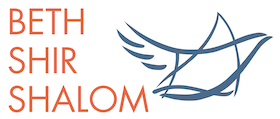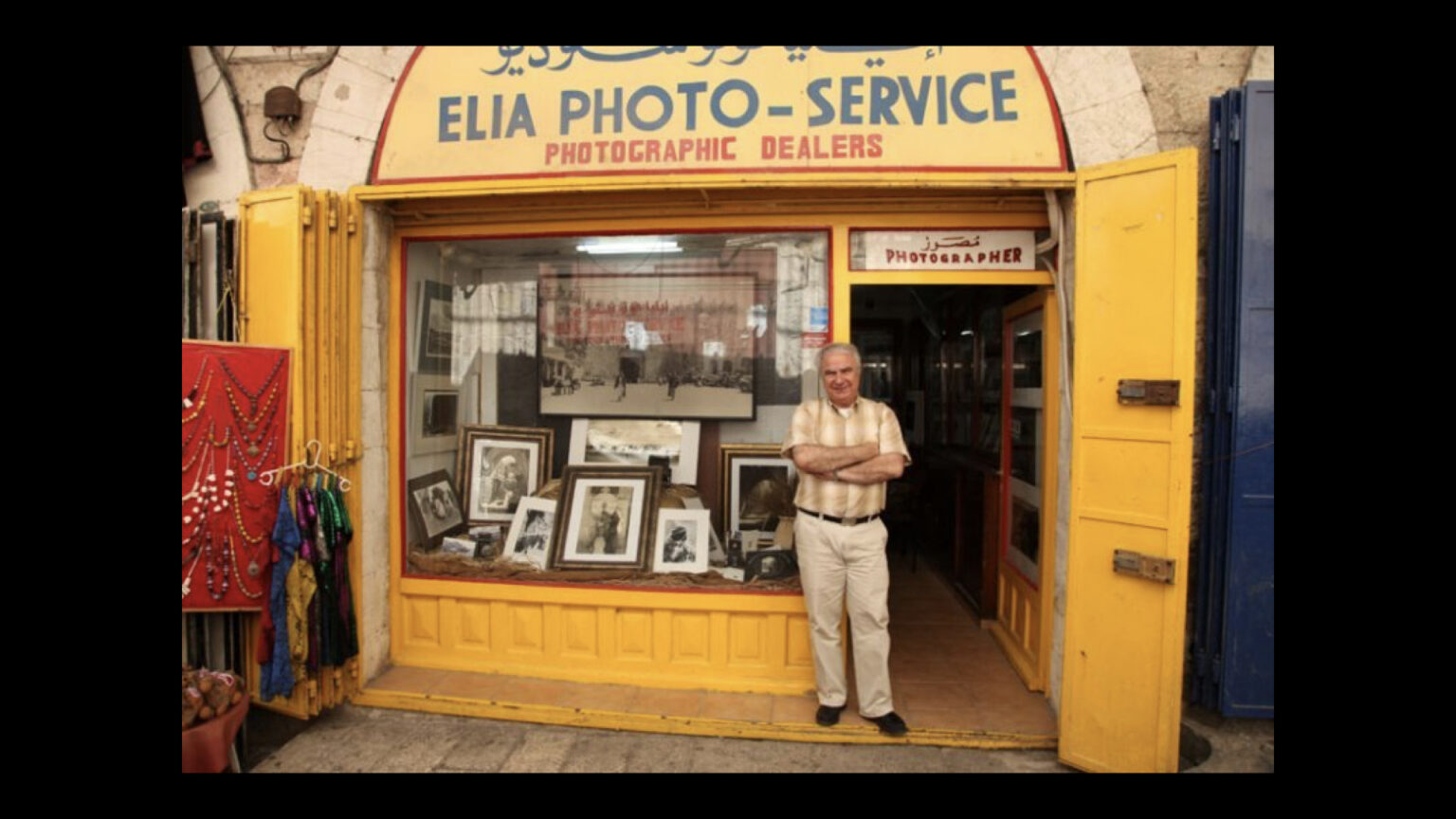
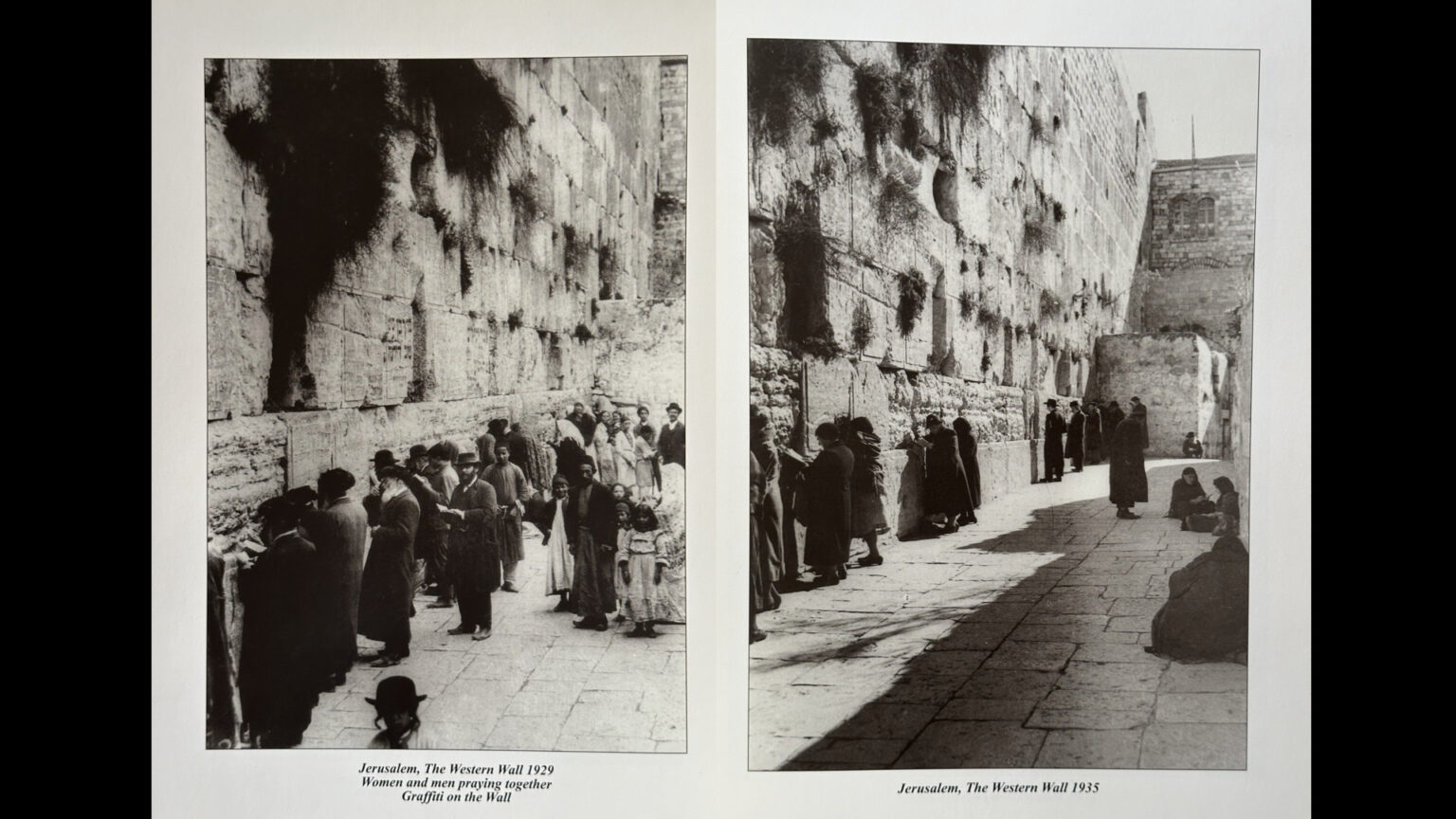
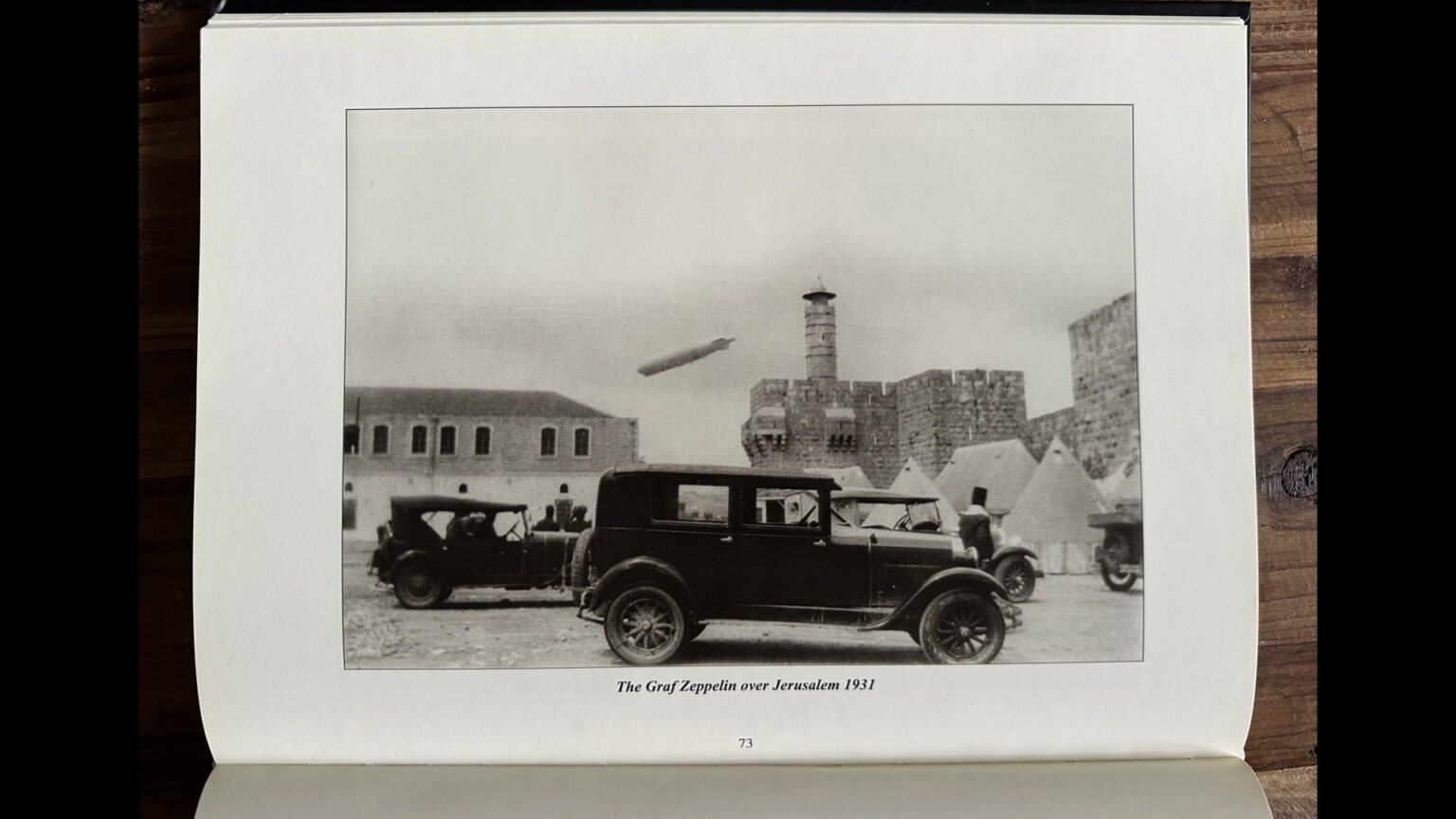
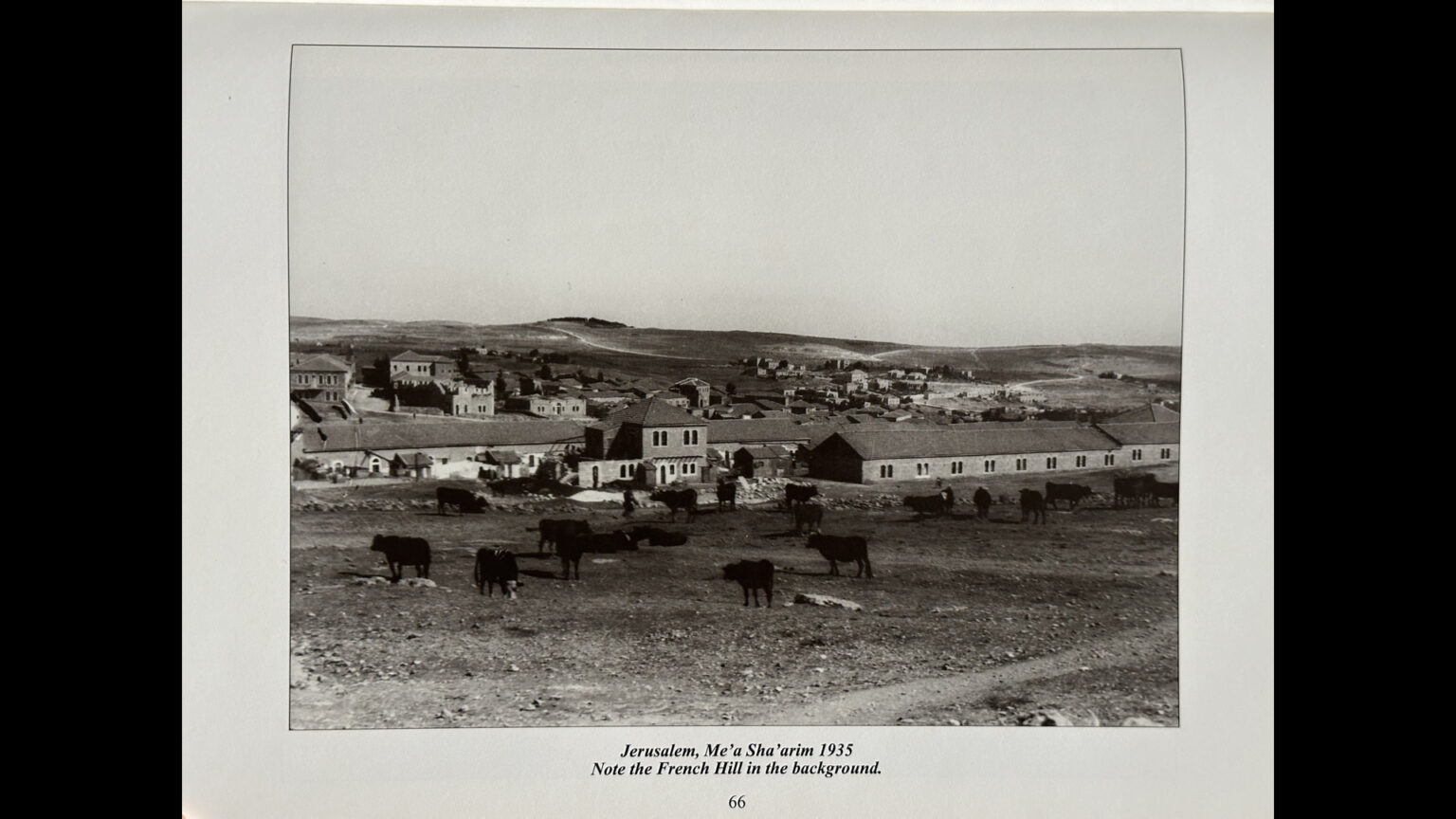
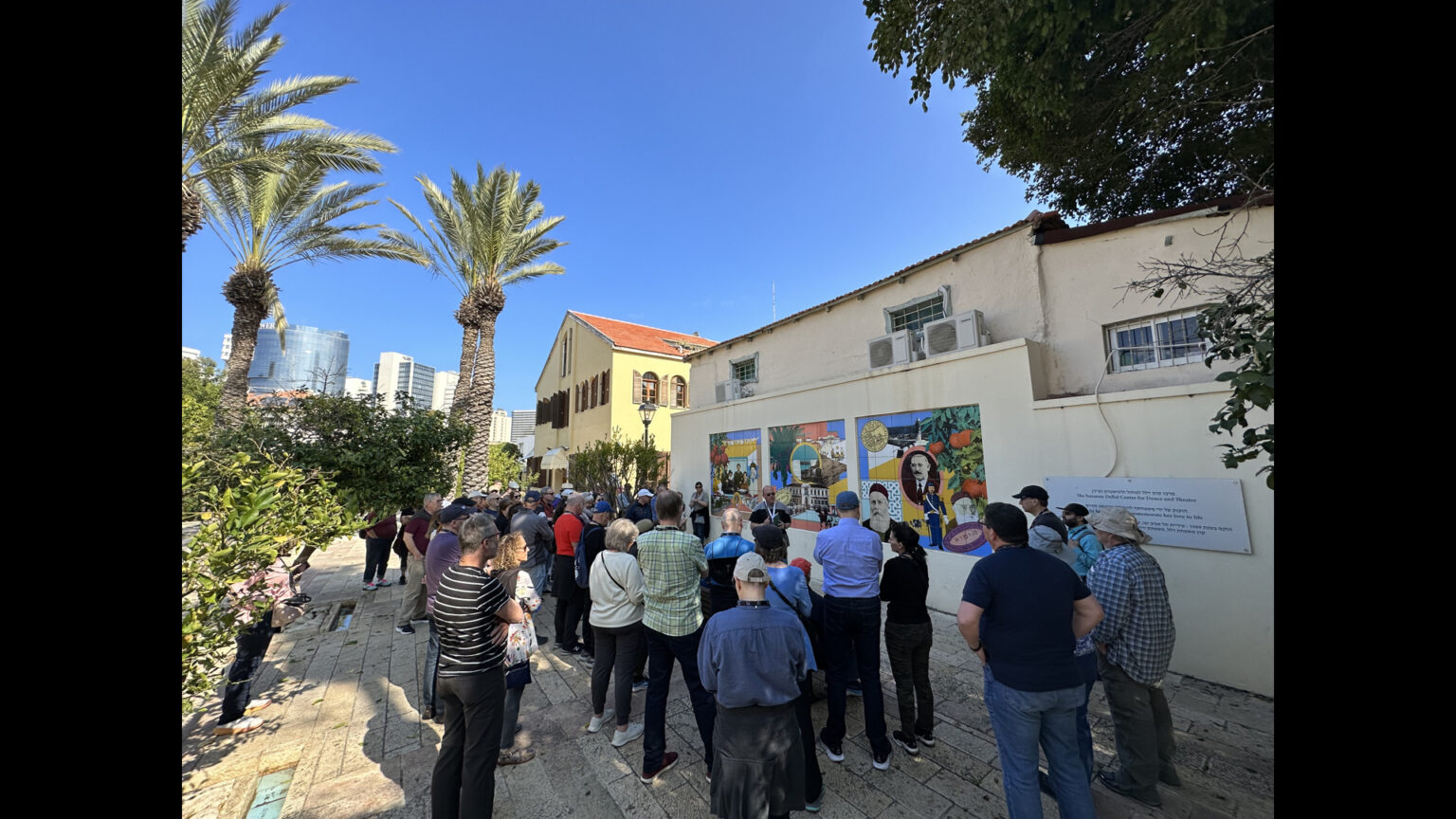
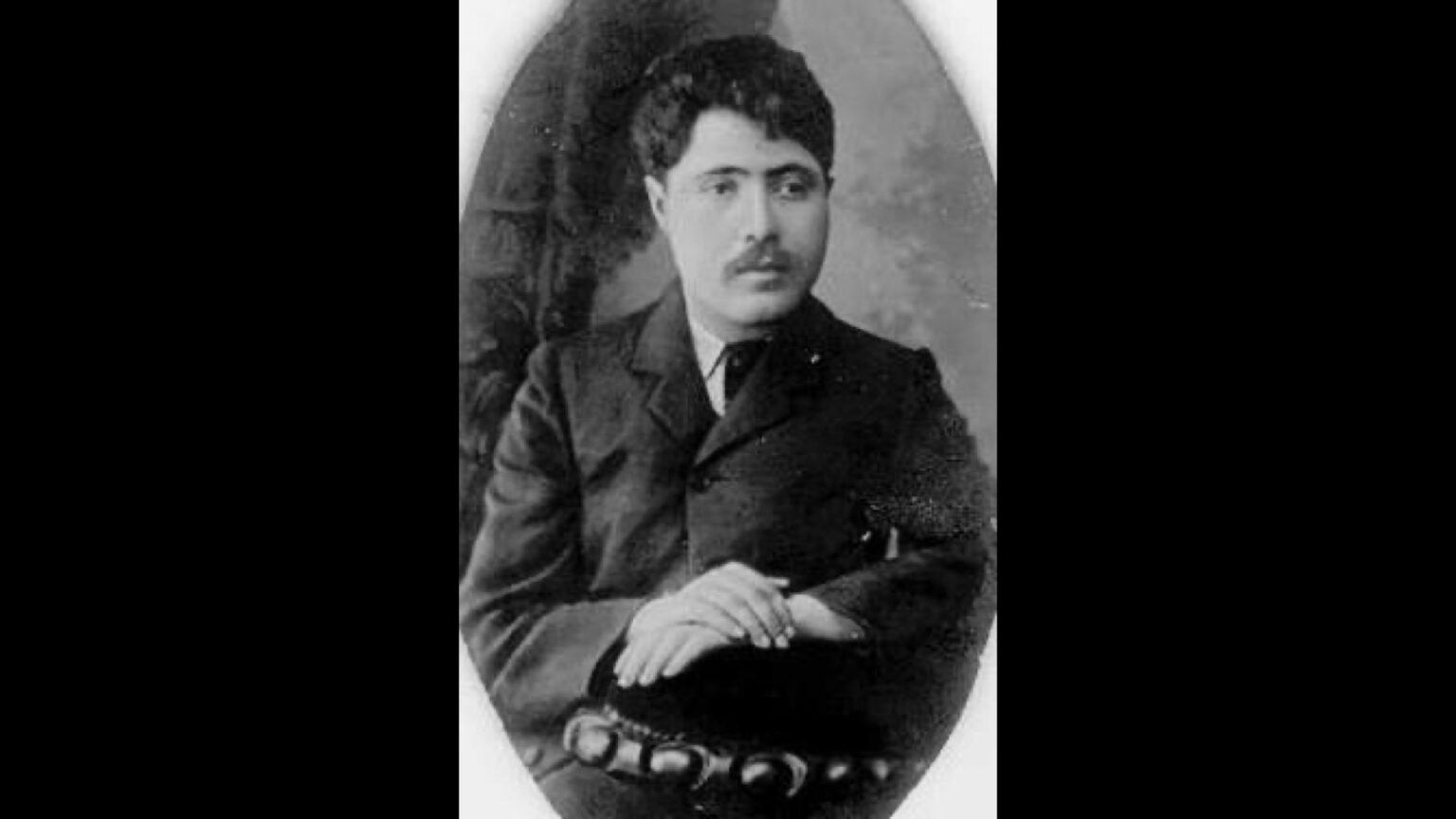
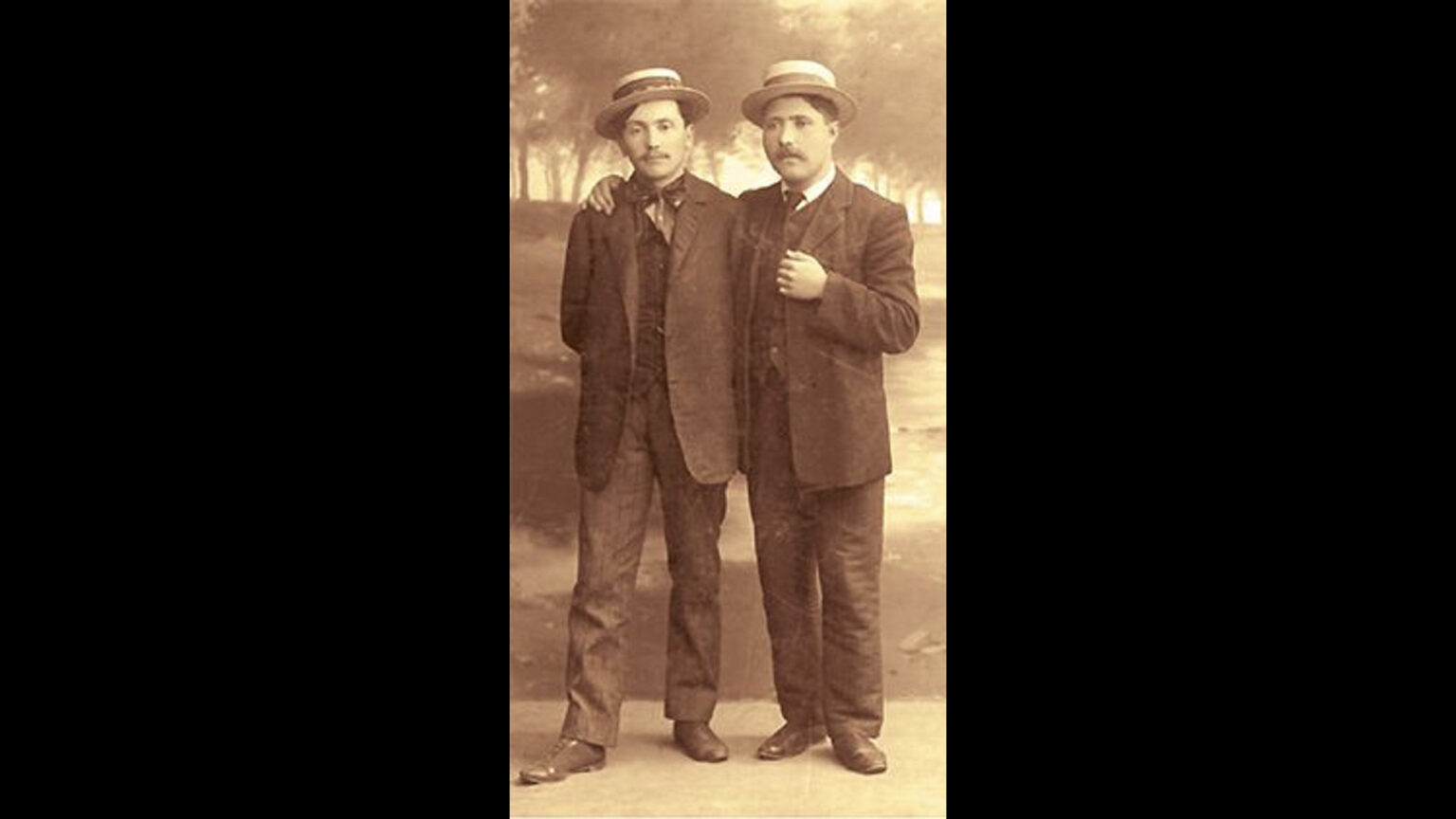
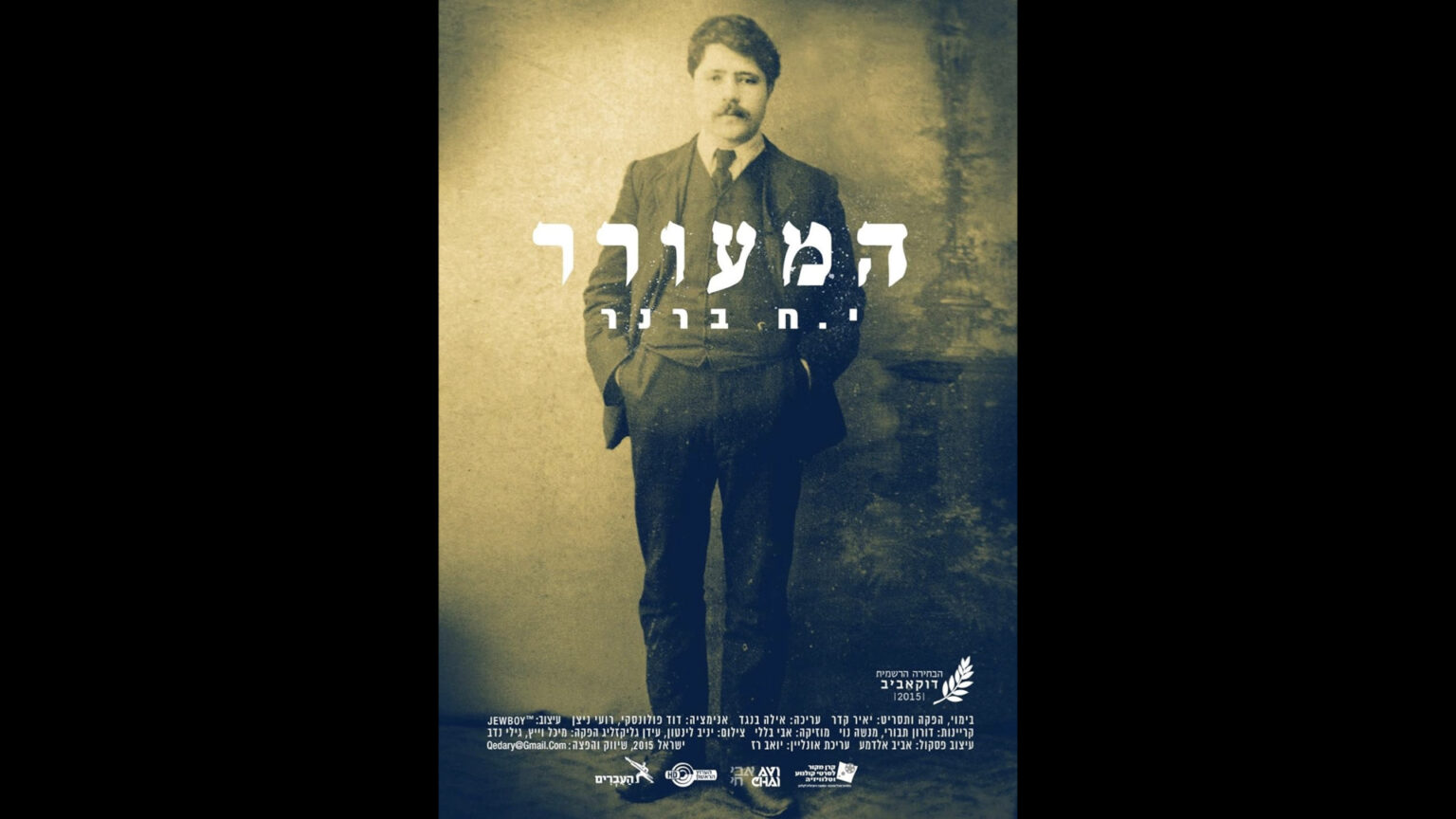
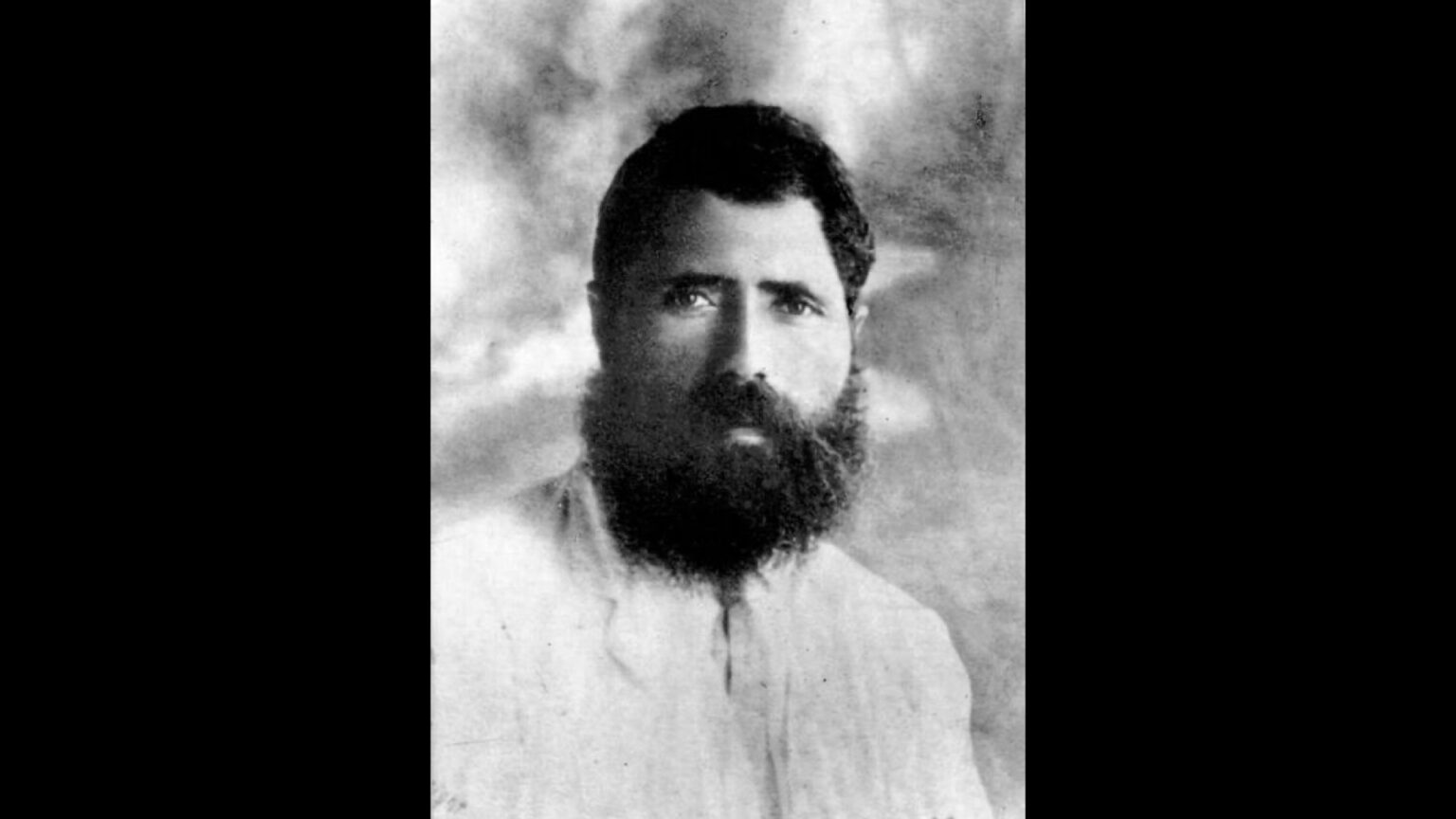
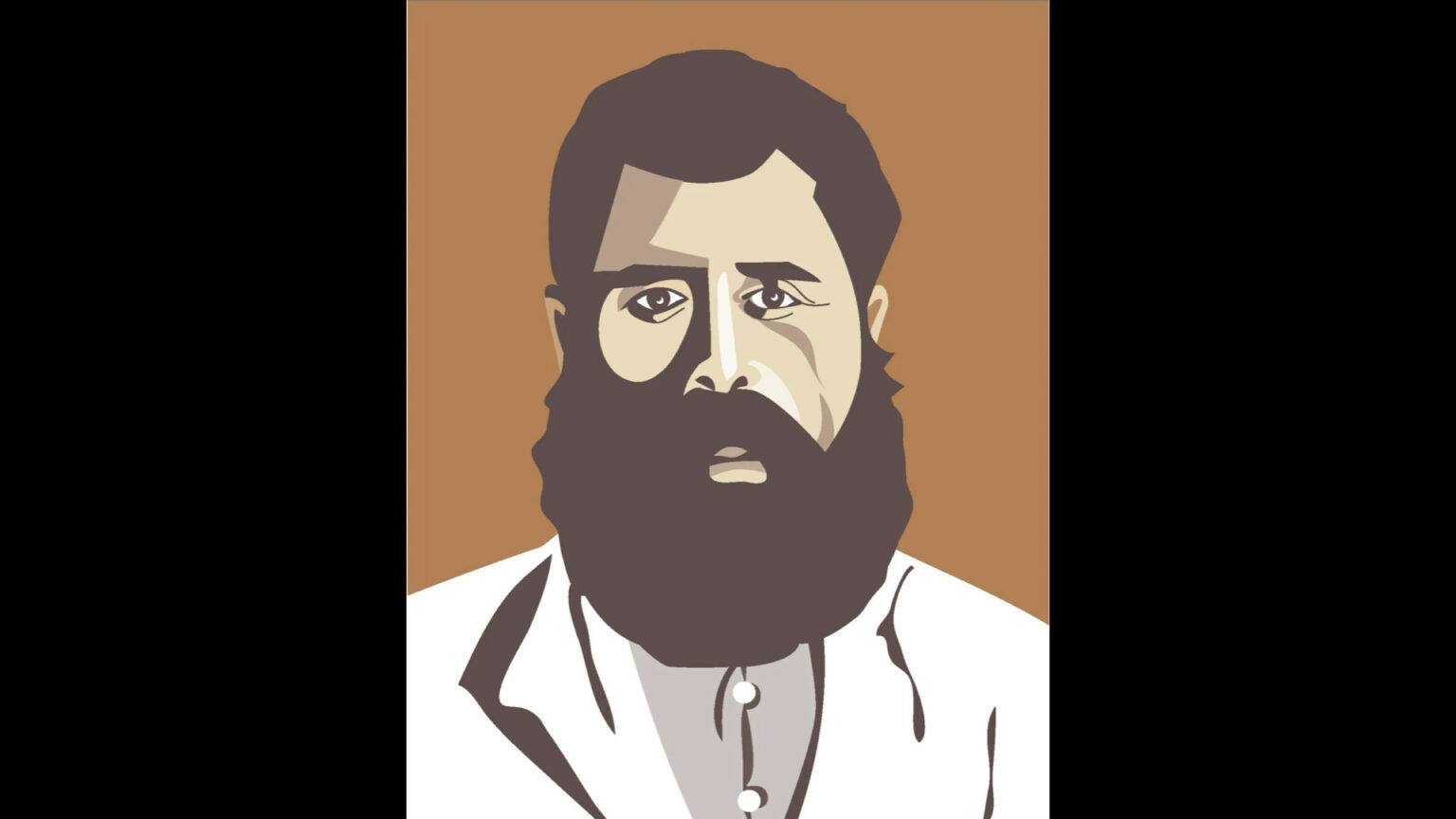
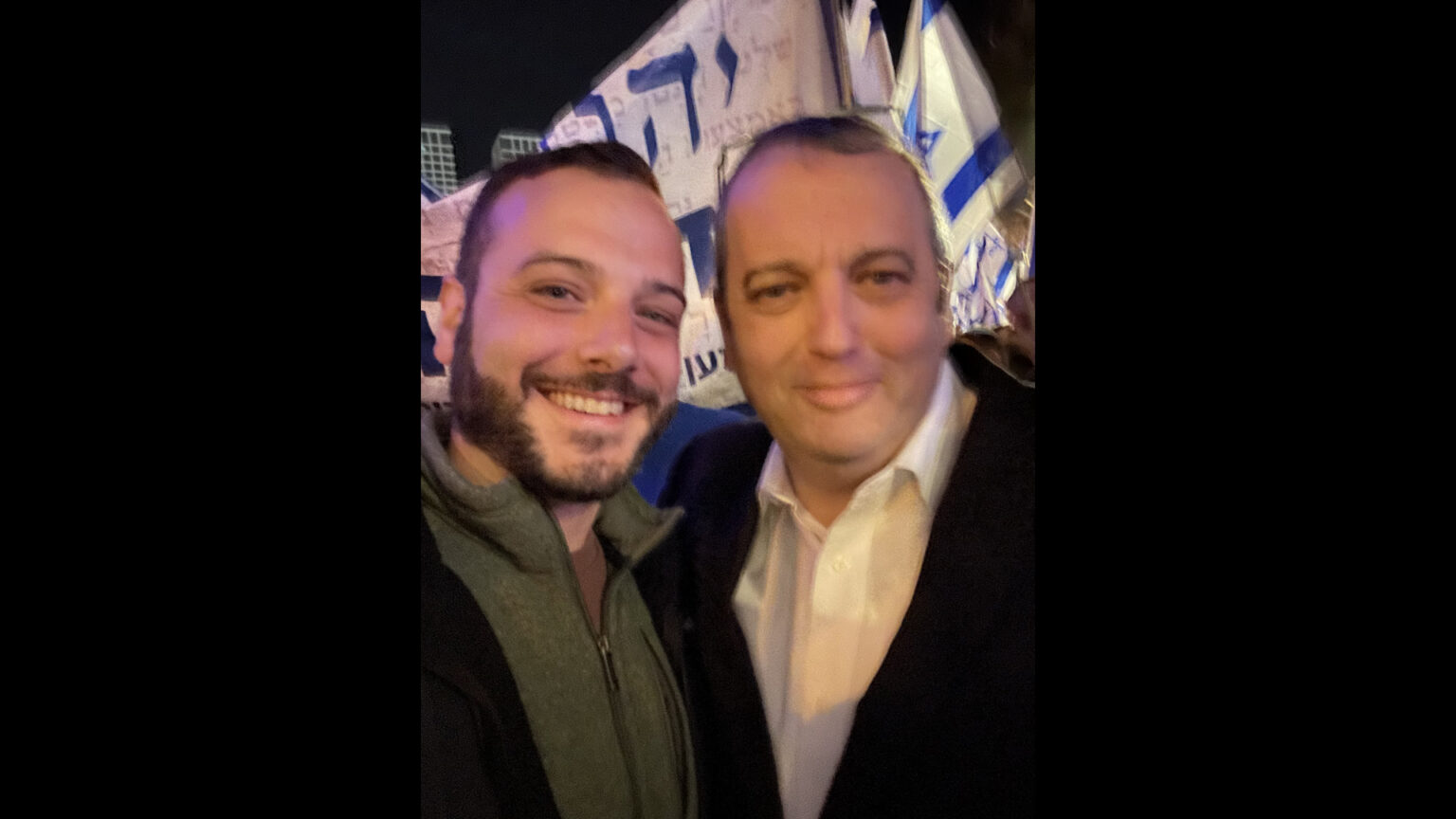
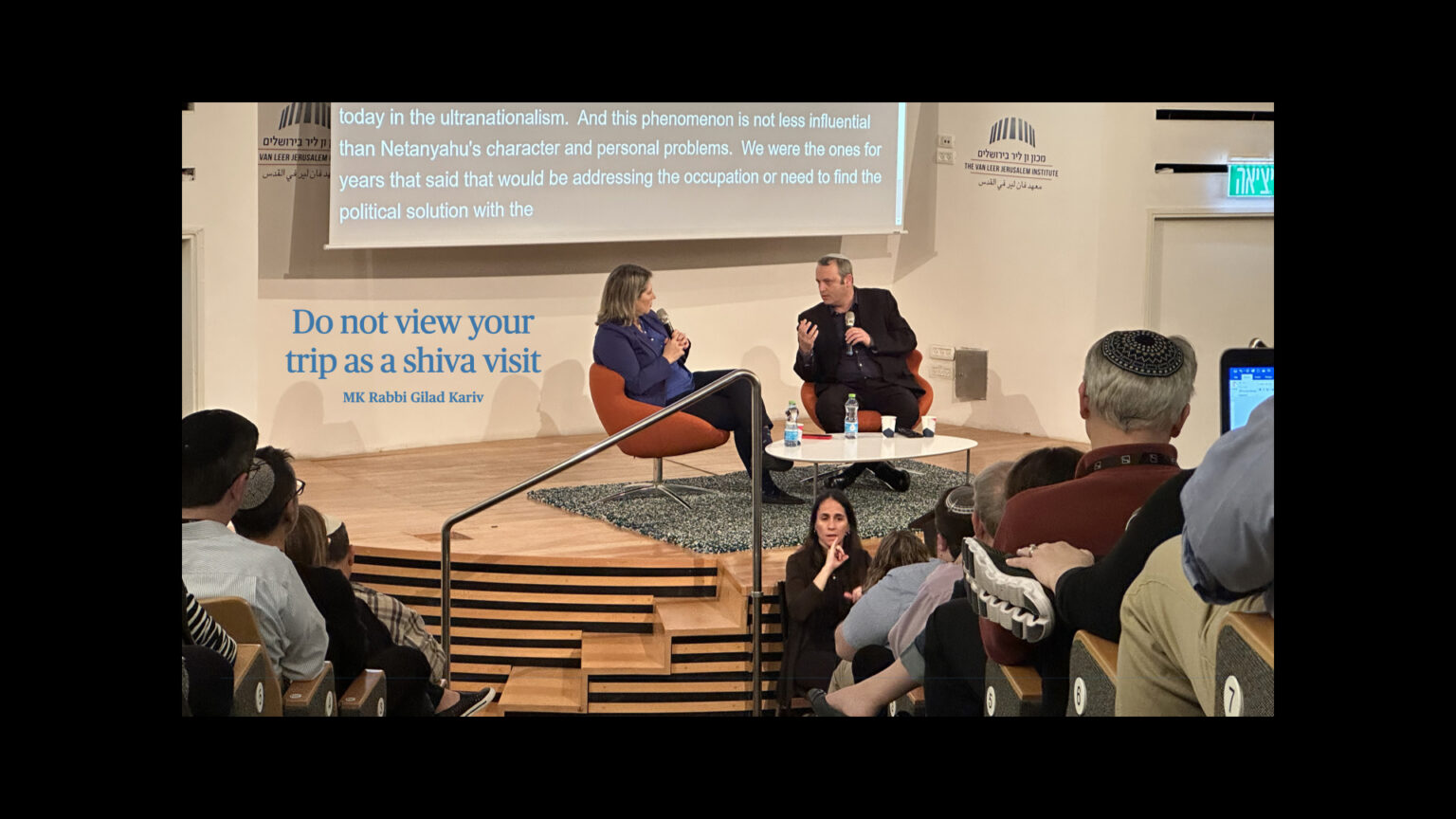
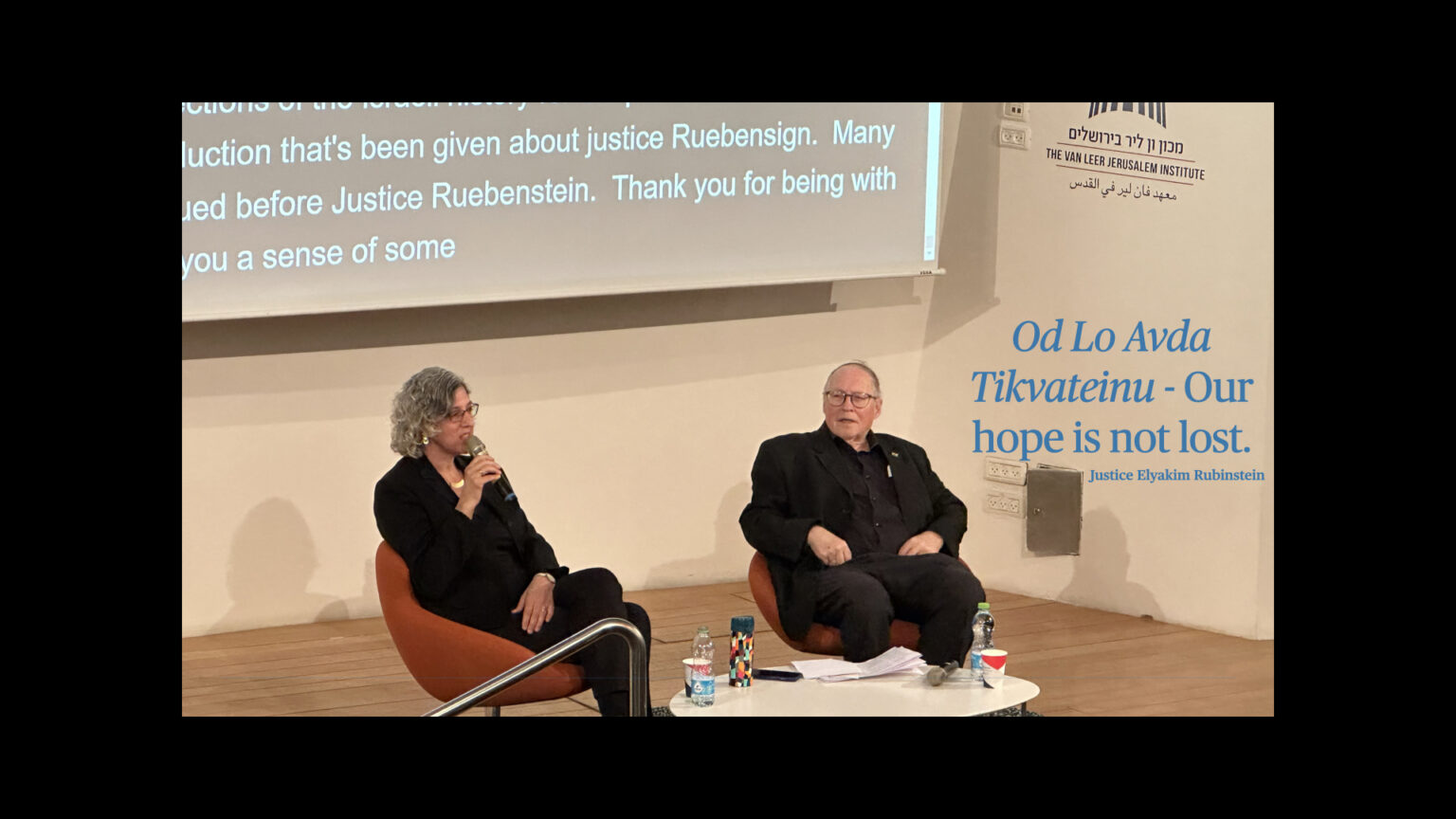
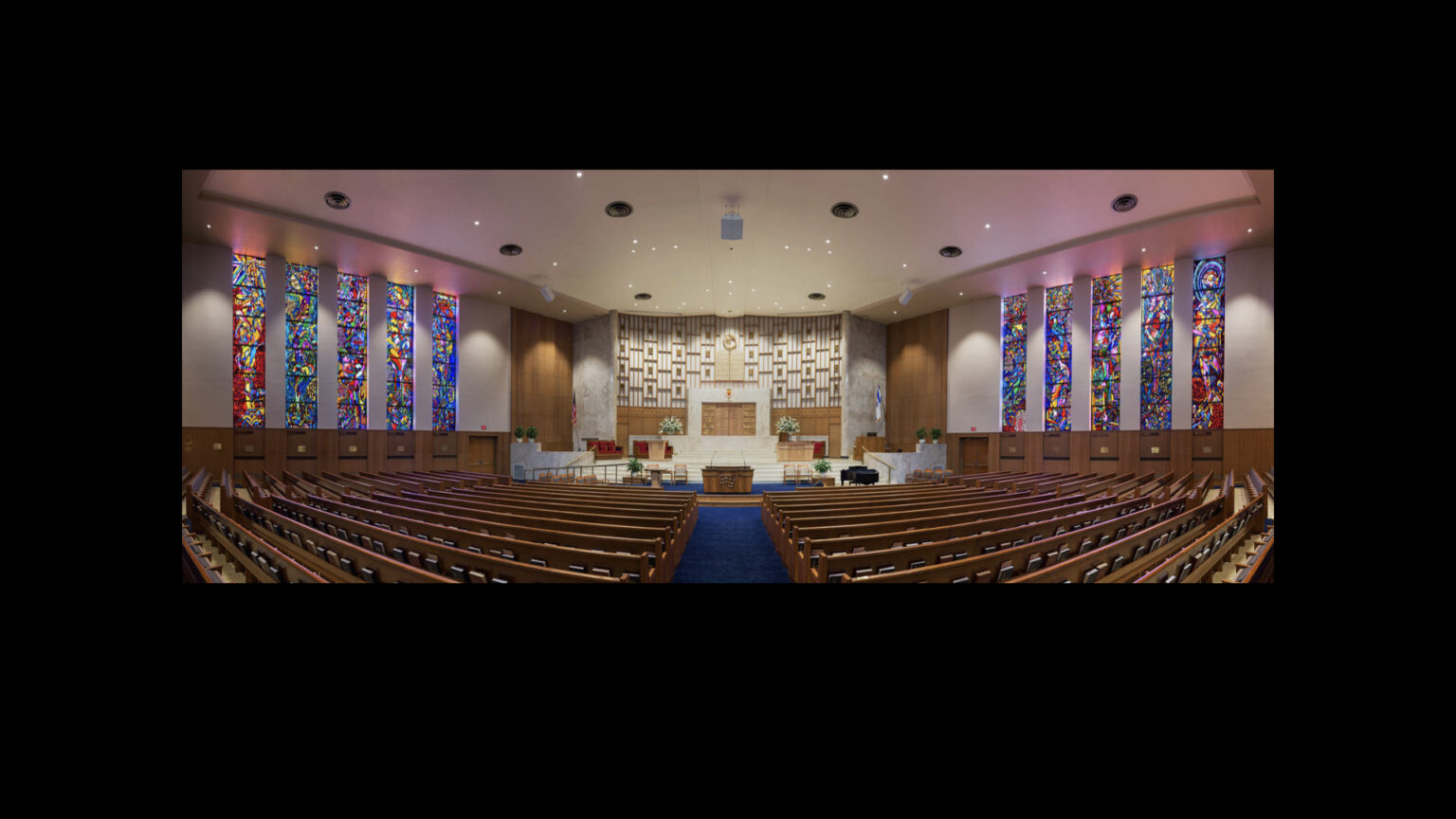
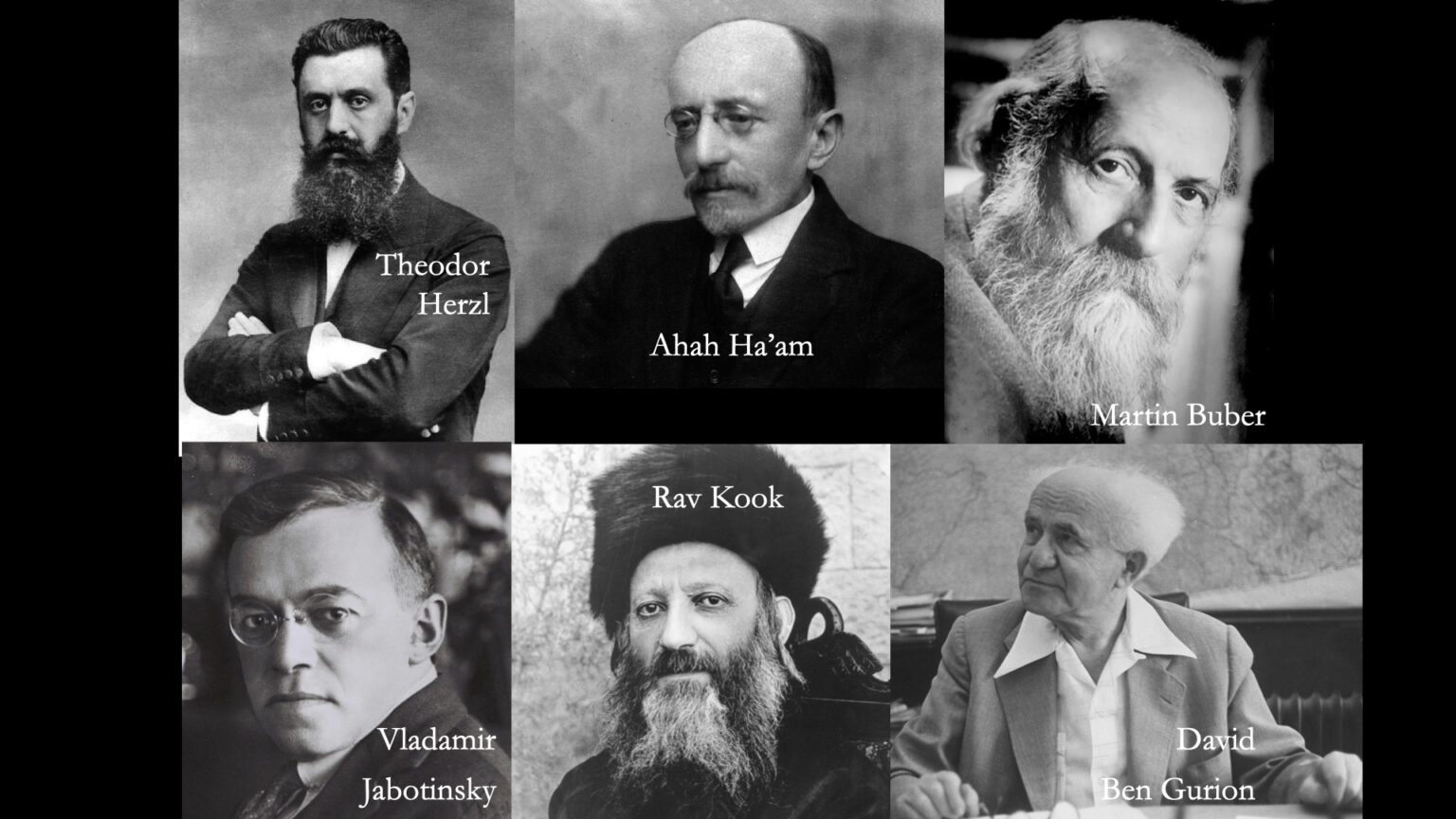
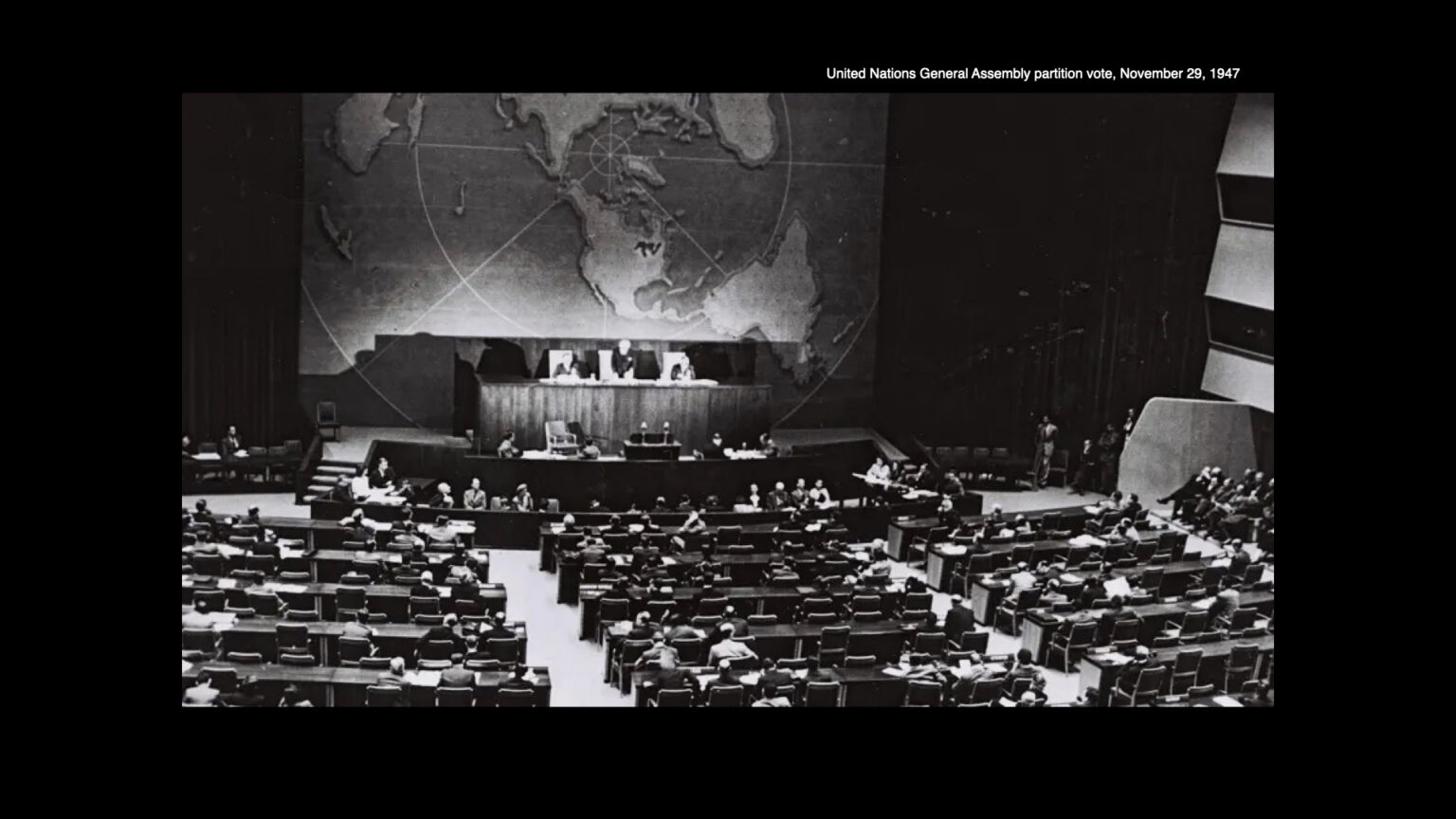
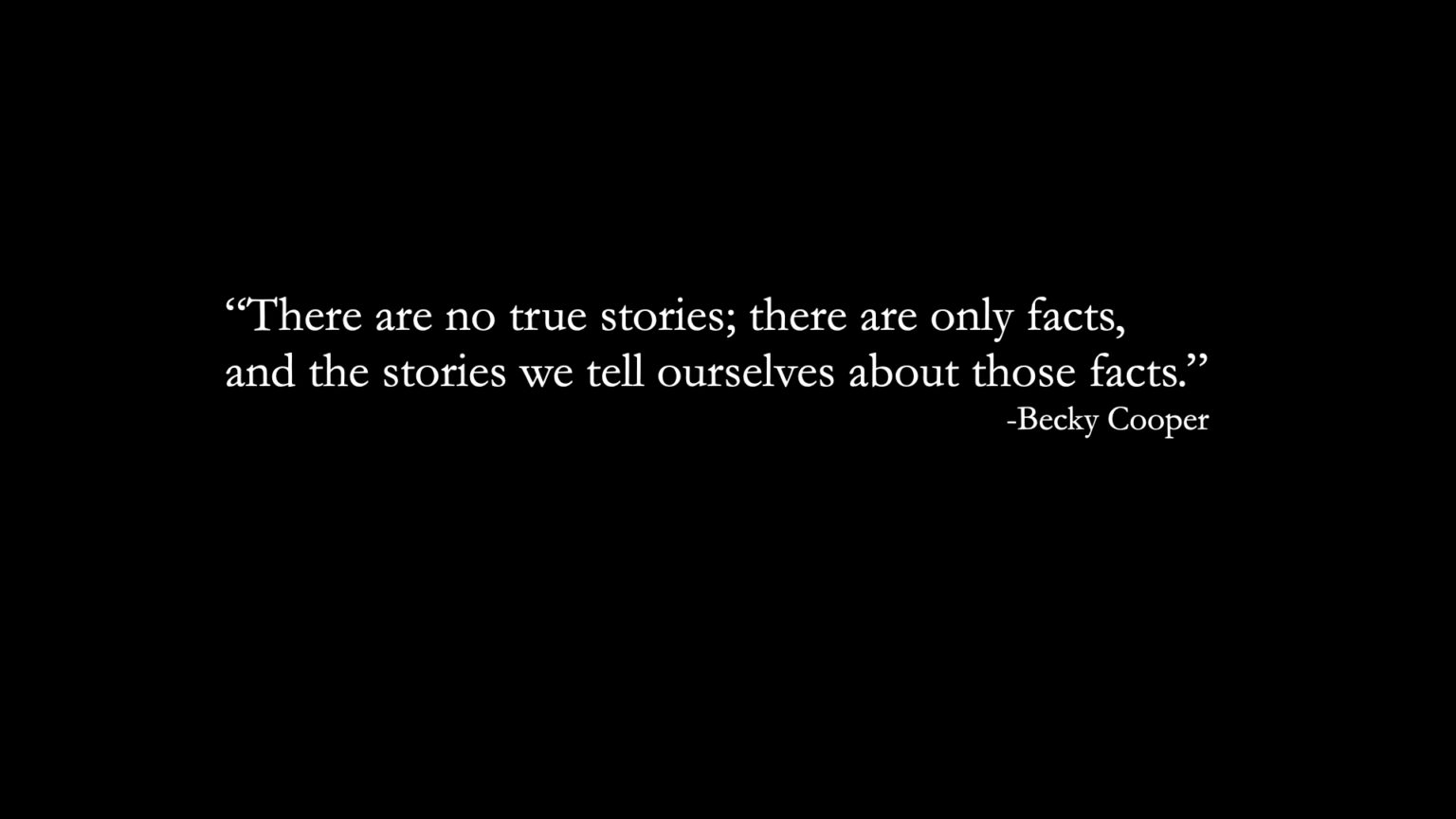
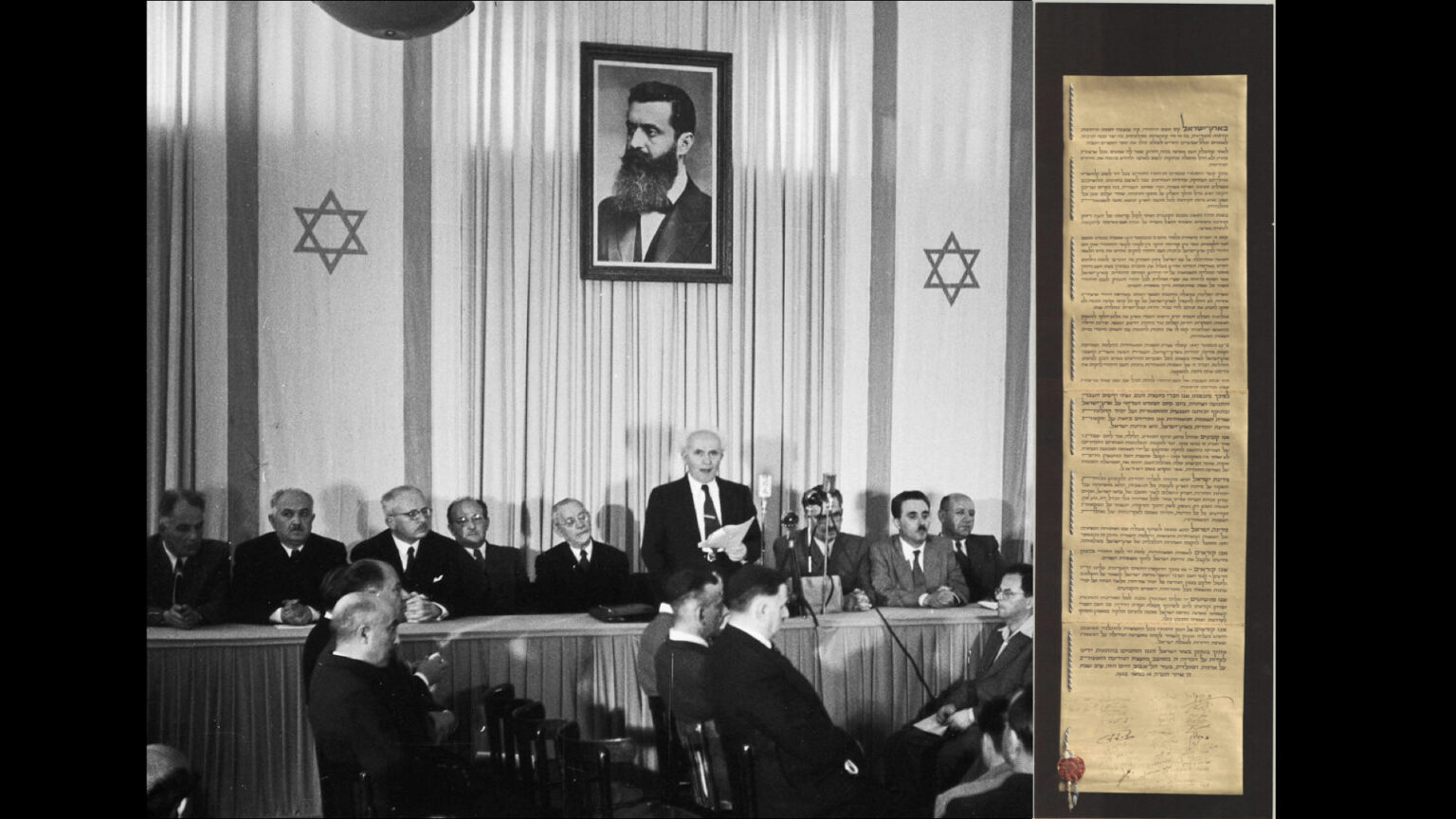
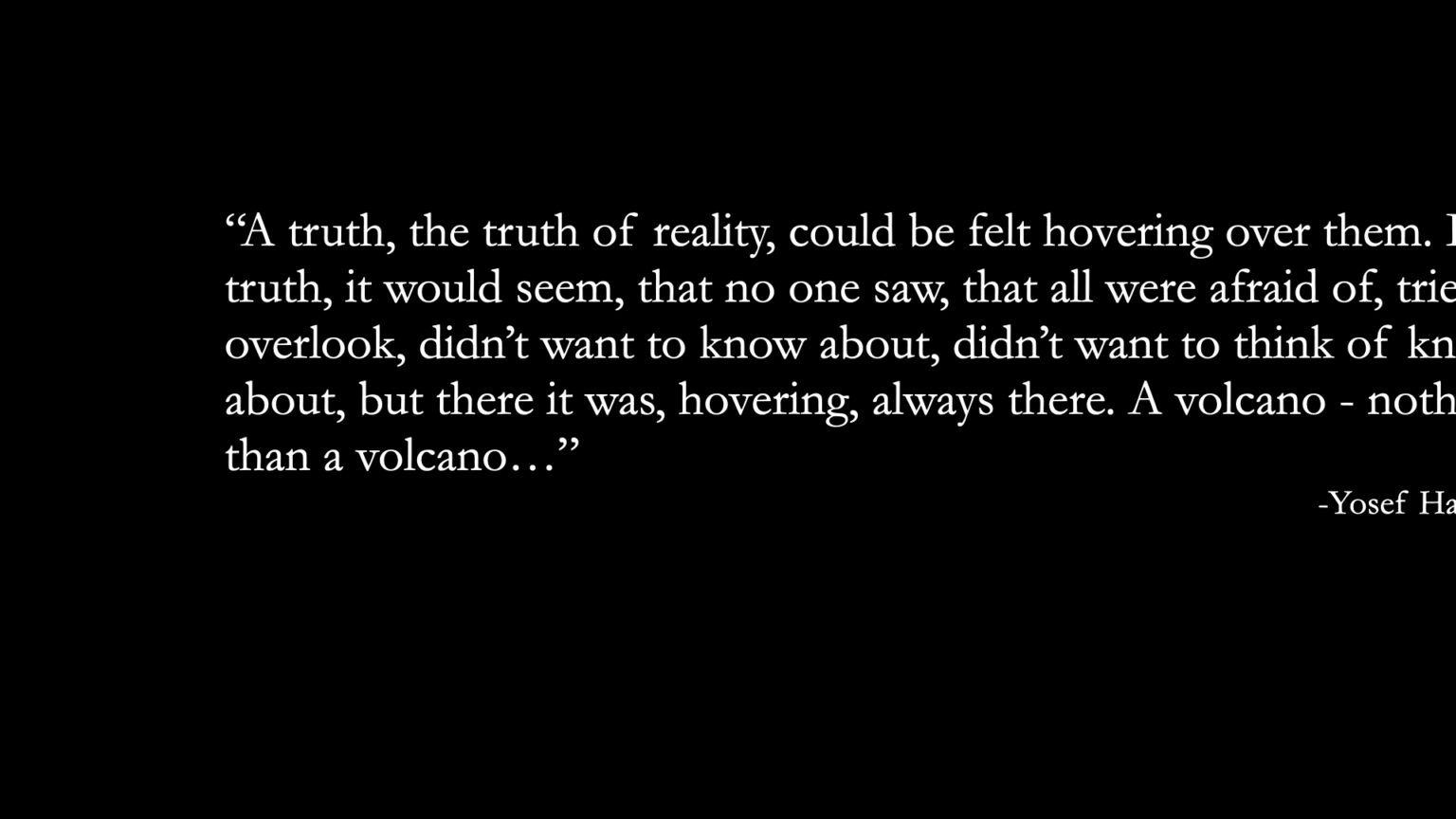
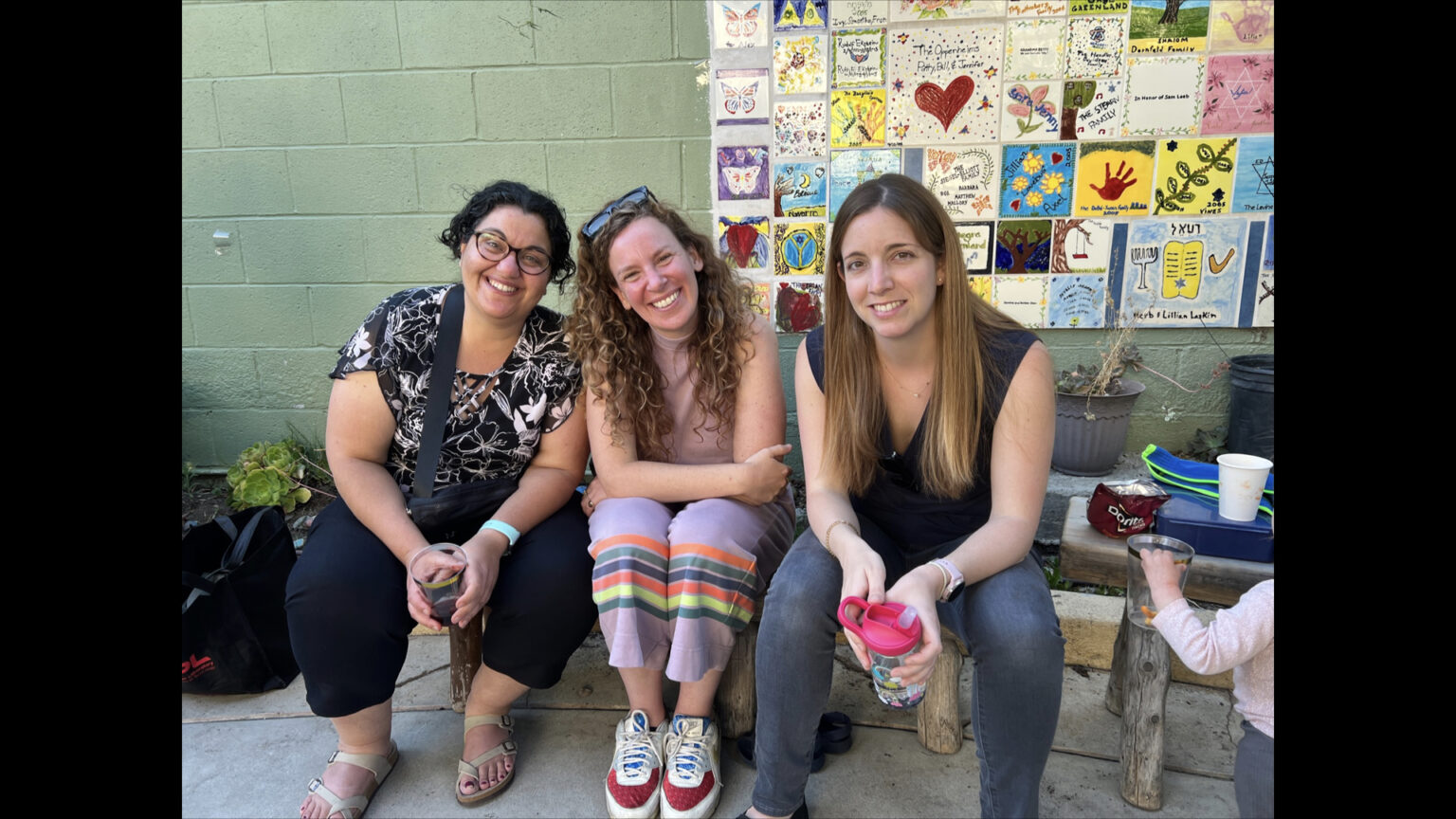
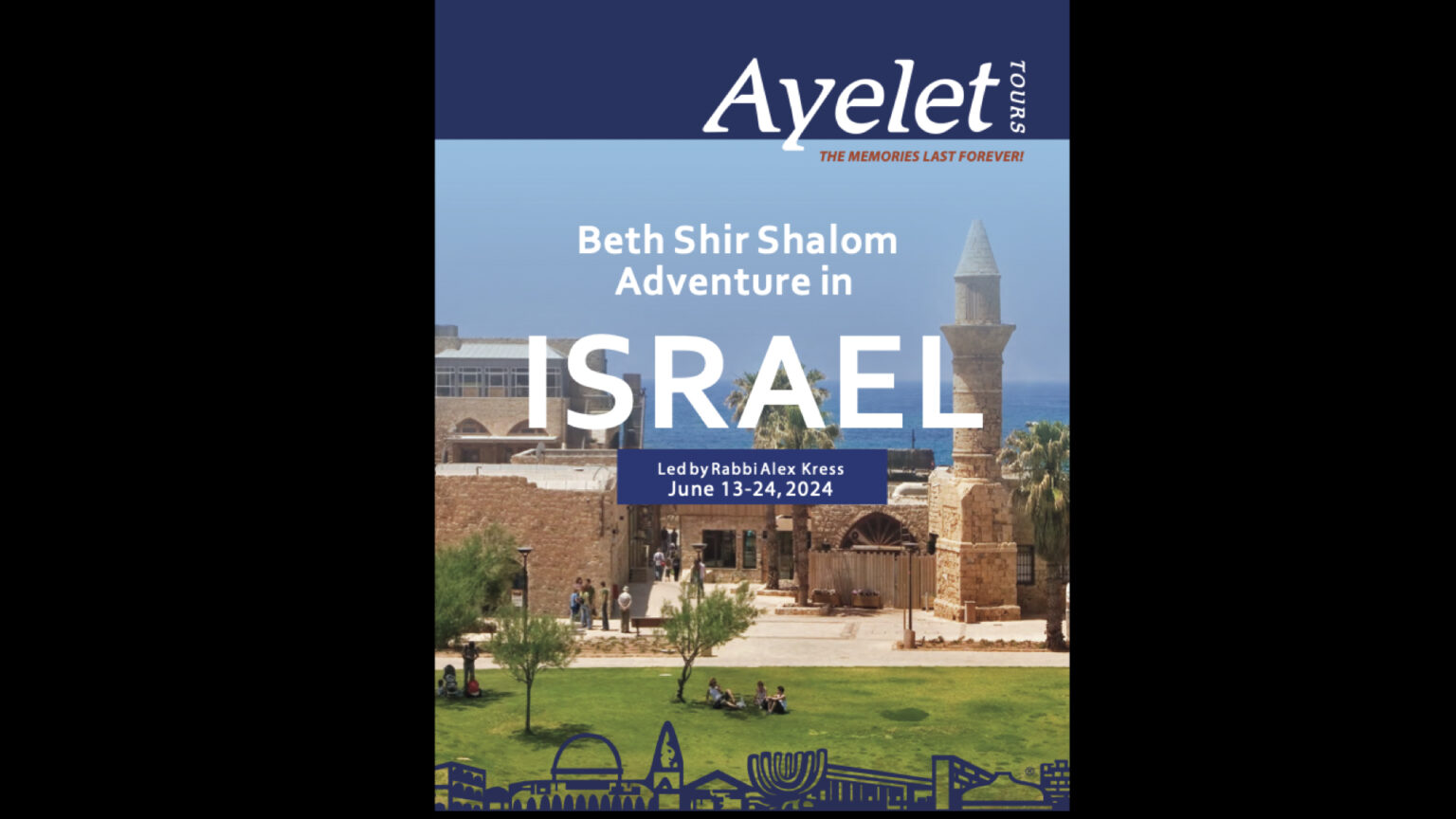
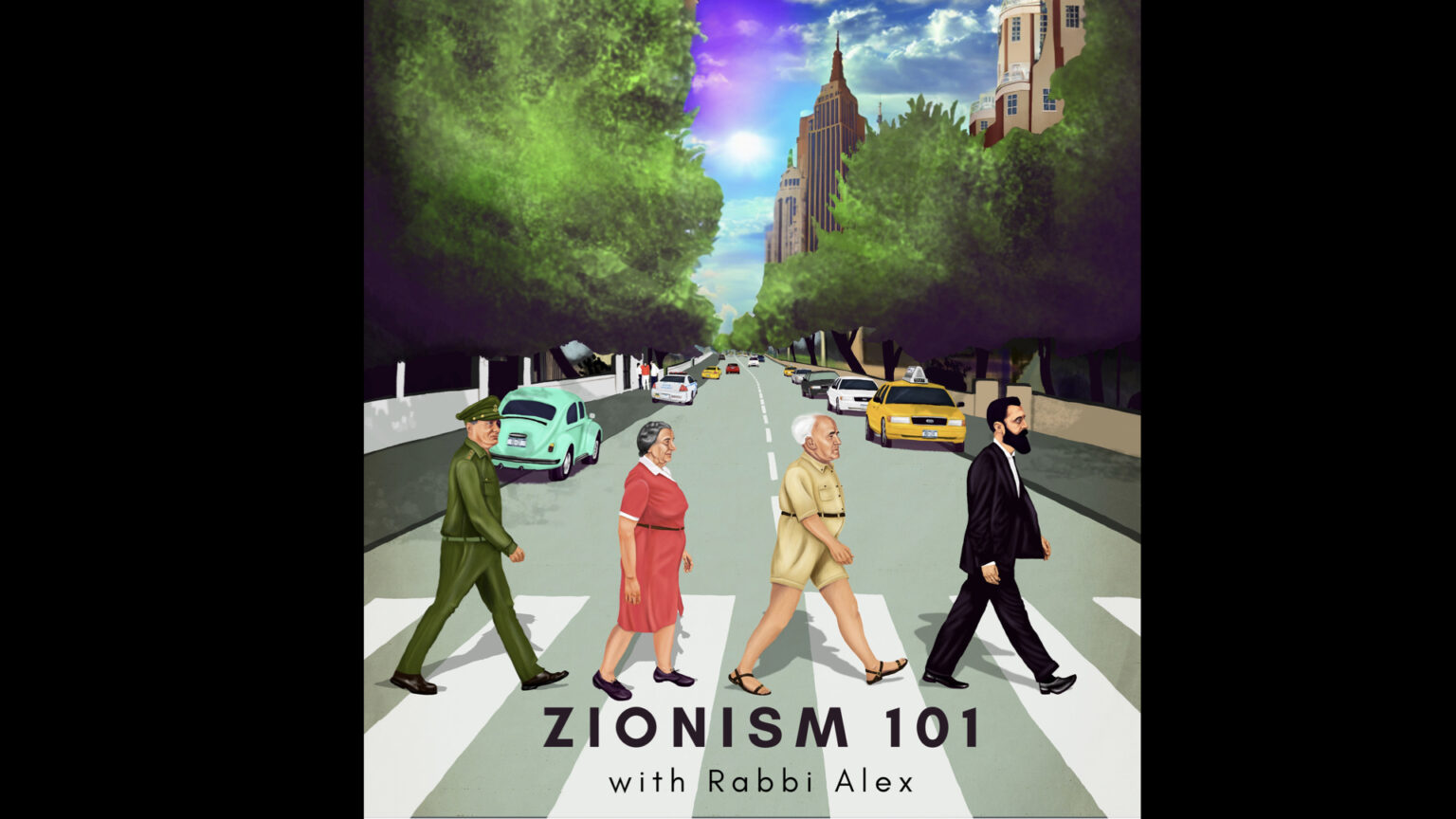
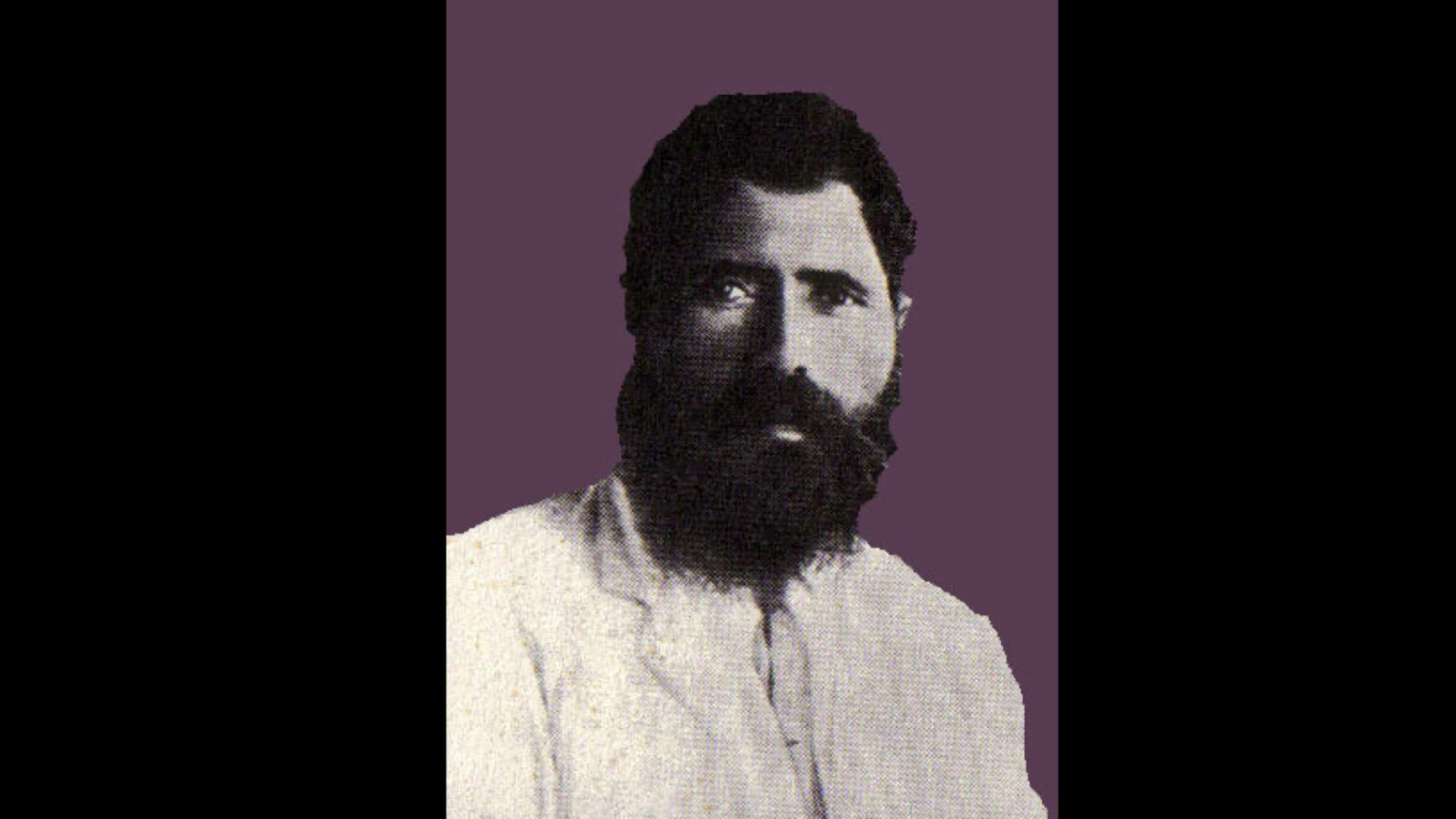
On Zionism - Rabbi Alex Kress
When I was 20, I was wandering the Old City with my Rabbi. As happens in Jerusalem, the stones can lead you down winding paths, around sharp curves, under low archways, through ancient marketplaces, and into other worlds. As we wandered away from the Western Wall and the Temple Mount, he led me to a time portal. For centuries Christians have flocked to the Church of the Holy Sepulchre, to see the site where Jesus was crucified and where his empty grave lay. Tucked just behind the church is a little shop with yellow doors called Elia Photo.
Elia Photo has amazing photos of Palestine in the first few decades of the 20th century – a land whose stories have captivated my imagination. They have photos from when the Kotel/Western Wall was a place that men and women visited together and was surrounded by old city homes. They have a remarkable picture of a Zeppelin flying high over Jerusalem. They have amazing photos of Mea Shearim before it was an insular chasidic enclave, of Jerusalem before the traffic, of orange-packing in Jaffa. Feel free to come and explore the book from Elia Photos that lives in my office to see more amazing photos like this. Though I know that the land during Ottoman rule and the British mandate was a difficult place to live, I can’t help myself from romanticizing it. The time felt so alive with ideas, with debate, with idealism, with new beginnings, with hope.
This past winter, I wandered with 40 rabbis through Neve Tzedek, the first Jewish town established outside of Jaffa. I was filled with those romantic feelings of idealism and hope that came with the mythology of early Zionism. We stopped in a kikar, a little square, across a house from another time. I had the photos from Elia Photo in my mind as our guide told us that this was where the renowned Hebrew author Yosef Haim Brenner lived for seven years as a writer for the newspaper of “Hapoel Hatzair – the Young Worker” – a socialist, Labor Zionist movement that was pacifist, anti-militarist and sought to establish a Jewish foothold in the land through manual labor and agricultural settlement. The house we stood in front of was called “The Writers’ House,” a hub for influential Hebrew writers who helped revive Hebrew culture and establish it in Eretz Yisrael. But Brenner, himself, was an enigmatic celebrity after arriving in Eretz Yisrael who sought to stay out of the limeline.
His biographer, Israeli historian Anita Shapira, writes that “[Brenner was] admired as a writer and cultural leader by religious and secular people alike – and even more so as a person who laid down norms for a society that had lost its moral compass. He was a man of contrasts: skeptical of Zionism and loyal to the Land of Israel [. . .]; he possessed the boundless pessimism of a realist who unblinkingly observes reality, also the latent optimism of a man who irrationally claims that “despite everything” the Jews’ will to live will prevail.”
Brenner was born in the Pale of Settlement in 1881, in present-day Northern Ukraine. He grew up in a poor family attending yeshivas, or religious schools for boys. In 1901 Brenner was drafted into the Russian army, but deserted two years later and eventually landed in London in 1904. During his service, he had published his first novel and landed in his new city already a respected writer at 23. In London, he founded a journal called, HaMeorer – The Awakener, which Brenner defined as a pamphlet for thought and poetry but whose title more aptly described its editor. As scholars note, HaMeorer came at a time when people weren’t reading secular Hebrew literature anymore. At a time of decline and fear that such literature was fading out, The Awakener, in some respects, kept Hebrew literature alive.
After ending the publication in 1908, Brenner landed in Ottoman Palestine after a brief sojourn in Galicia. Though he initially tried to realize the Zionist image of a New Jew settling the land through agriculture, he quickly realized he was not suited for the field. Perhaps he wasn’t suited for the reality of Israel at all. He wrote to friends who asked him if they should come: “You want me to write ‘in all seriousness’ that you should come, but I cannot tell you that even light-mindedly. The climate of the country is harsh, malaria is rife, there is no way of making a living, none!” To another he wrote, “That you should go to Palestine—no, I do not advise it. . . . Life here is very, very hard. Everything is expensive, there is no means of livelihood, there is sickness, and so forth.”
But this honesty about the land – about the Jewish Yishuv / or pre-state settlement – about the ideas of other Zionists – about the importance of Hebrew literature and culture – turned Brenner into a prophet. Anita Shapira writes that “Brenner—with his Hasidic rabbi image of a miracle worker possessing moral authority and capable of speaking the unvarnished truth to anyone—met the needs of the young secularists. His charisma shone through his shabby clothes and the heavy coat he wore even in the scorching summer heat. There was something mysterious and inscrutable about him that attracted and repelled, that aroused admiration and awe. He was thought of as a great rebel who…sought a reformed world, a just and egalitarian society…In these times of social turmoil and seeking the right path, young people in quest of social reform are turning wistfully to Brenner as a symbol, a beacon for all seasons.
During this past winter’s trip, I joined hundreds of Reform rabbis in Israel. I’ve spent about 2 cumulative years of my life in Israel and this was my 11th trip to the holy land. We were there to learn and observe recent developments, connect with our Israeli colleagues and friends, and stand in solidarity with the protestors fighting for Israeli democracy.
From our opening session, the tension was unlike anything I had previously experienced. We were greeted by the first Reform Rabbi to become a member of K’nesset – Gilad Kariv. He is a wonderful man who has led the Israeli Reform Movement to double in size over the past ten years. As if harnessing the power of the prophet Yosef Haim Brenner, he opened our day with the unvarnished truth: “I think that this group of politicians is placing a serious risk on Israeli democracy, and not only on Israel’s democracy, also on Israeli Judaism and Zionism.” He then implored us: “Do not view your trip as a shiva visit.”
We then met with former Supreme Court Justice Elyakim Rubinstein, an observant Jew who just a day before was protesting with Israelis encircling the K’nesset. He told those that recognized him that the demonstrations were like, “water on a rock. Over time the water affects the rock. Maybe all the public demonstrations and the public criticism may have some effect.” He closed by quoted HaTikvah, Israel’s national anthem:“Od lo avdah tikvateinu – our hope is not lost”
I was raised in a very Zionist synagogue and Jewish community landscape. I remember clearly learning HaTikvah in religious school, learning Hebrew decoding from many Israeli teachers, watching Rechov Sumsum – Israeli Sesame Street, pretending to take an El Al flight while watching an aerial video flying over the holy land, going with my rabbi to AIPAC’s Policy Conference in DC, and traveling to Israel multiple times in High School. I had many Israeli counselors at URJ Camp Harlam and even some Israeli friends my own age from camp. Zionism was the norm.
But Zionism wasn’t always the norm. As Brenner’s biographer wrote, “Zionism was for him one creative option of many in the life of the Jewish people.” At my home temple, Keneseth Israel in Philadelphia, Zionism was not the option of choice in the late 19th and early 20th century.
In 1885, before the words Zionism or Zionist had been coined, before the fledgling movement of Jewish nationalism and its many factions had held their first congress, the Reform Movement in America declared: “We consider ourselves no longer a nation, but a religious community, and therefore expect neither a return to Palestine, nor a sacrificial worship under the sons of Aaron, nor the restoration of any of the laws concerning the Jewish state.”
In what remains a moving idea, the Reform Movement said, “We don’t live in exile – in America or anywhere Jews live. Judaism is a religion, and the country we live in is our home. We don’t want to leave. We don’t want to make aliyah.” The Reform Movement, in stark contrast to the early Zionists, rejected the very notion of Exile/Diaspora/Galut as a condition. Many in the Haredi Orthodox communities also rejected Zionism but on different grounds. They were committed to living out their sentence of diaspora as a consequence from God for Jews not following the Torah. They prayed for a return to Zion through messianic redemption – not a return to Zion through the political movement of secular Zionists.
During these decades from the late 19th century through the first few decades of the 20th century, many different schools of Zionist & Antizionist thought evolved and came into contact with each other; they argued and debated with each other. The many factions of Zionism grew into stronger movements: there was Theodor Herzl’s political Zionism, Ahad Ha’am’s Cultural Zionism, Martin Buber’s Binational Zionism, Vladamir Jabotinsky’s Revisionist Zionism, Rav Kook’s Religious Zionism, and David Ben-Gurion’s Labor Zionism. There was such rich, intellectual conversation about the future of Jewish life and what it means to be a Jew in the modern world.
By 1937, the tide had turned in favor of Zionism. The Reform movement declared it an “obligation of all Jewry to aid in [Palestine’s] upbuilding as a Jewish homeland by endeavoring to make it not only a haven of refuge for the oppressed but also a center of Jewish culture and spiritual life.”
Ten years later, the UN would confirm Jewish statehood, and Israel was born on May 15, 1948. In the decades that followed, support of Israel became as central to American Jewish life as any other religious practice. And over time, Zionism became shallower and shallower. What seemed like the vociferous debate of a Talmud page at the beginning of the 20th century became the quiet conversations we have behind closed doors by the century’s end. By the time I was learning about Israel and Zionism in religious school and teen programs and camp, it had become so shallow that it lacked depth and resilience. It couldn’t stand alongside other narratives, withstand contradictory facts on the ground, or handle complicated realities of violence, civil rights, and religious liberty. The Zionism I grew up with told me that its narrative was the true story, and anything that contradicted that story was false. But, as journalist Becky Cooper writes, “There are no true stories; there are only facts, and the stories we tell ourselves about those facts.”
In my first year of rabbinical school in Jerusalem, we took a class creatively called Israel Seminar. My professor, Shlomit Naim-Naor, introduced us to an educational framework by theorist Kieran Egan. It’s called Cognitive Tools Theory and details five distinct phases of cognitive tools or ways of thinking as we grow up. For the sake of this exercise in class, we skipped the somatic stage that happens before kids are verbal, and started at the Mythic Stage, which involves imaginative storytelling and narrative; binary opposites and stereotypes; learning your culture’s myths. Next is romantic thinking, which adds gradations to the black and white thinking and learning the limits of the real world. Then we grow into philosophical thinking, learning the theories of the world and where we fit in, categorizing knowledge into more abstract theories. Finally, we get to ironic thinking, growing into tolerance for ambiguity, being able to hold two truths at once, sitting in the nuance, and considering multiple perspectives.
As she explained it, it became clear that this educational schedule of learning development was also a meaningful tool to reflect on our education. Let me give you a simple example in the American educational context. Mythic might be the stage of “In Fourteen Hundred Ninety Two…Columbus sailed the ocean blue.” Romantic might be learning about the stories of a hero like Pocahantas, or the idealized story of Native Americans and the Pilgrims having a peaceful meal that we now call Thanksgiving. Philosophical might be connecting our American values of freedom and religious liberty to the story of Pilgrims fleeing religious persecution. But not until Ironic do we become skeptical of Columbus, do we deeply consider the impact of the Pilgrims on the Native Americans, do we begin to realize that there are no true stories; that the facts, the history, tell many different stories.
I’d encourage you to consider how this theory overlays onto your Israel education, but for me, I felt very seen. I felt the Jewish community intentionally kept the ironic stage away from me – they didn’t trust me with other stories, with conflicting information to the clean narrative I was fed. They didn’t want me to wrestle with the fact that Israel hasn’t lived up to its Declaration of Independence: it hasn’t yet “fostered the development of the country for the benefit of all its inhabitants.” It hasn’t yet lived up to its promise to “ensure complete equality of social and political rights to all its inhabitants irrespective of religion, race or sex.” It is struggling currently to “guarantee freedom of religion, conscience, language, education and culture.” And that’s ok, because like the United States, Israel is a living country with complex challenging issues.
In Brenner’s first novel from the land of Israel, Bein Mayim L’Mayim, a story that reflects his struggles after arriving during the second wave of Aliyah or immigration to Palestine, the narrator says: “A truth, the truth of reality, could be felt hovering over them. It was a truth, it would seem, that no one saw, that all were afraid of, tried to overlook, didn’t want to know about, didn’t want to think of knowing about, but there it was, hovering, always there. A volcano – nothing less than a volcano…”
The name Israel – ישראל – means wrestling or persevering with God. It’s in the name. We are meant to wrestle with it. And we are meant to persevere, to not give up. Judaism thrives in the ironic. In the Torah we have complicated characters making complex, challenging decisions. In the Talmud we have arguments recorded across generations out in the open for all to see and dig into. So too, in modern Zionism, should we embrace the ironic stage of learning and all the messiness that comes with it..
There are a few powerful ways to embrace the ironic. The first, to me, is the most important. We are blessed to have a community with many Israelis of many backgrounds. The service this morning is a testament to the richness our Israeli friends bring and how much stronger our community is with them present. AND – we know it’s easy to fall into comfortable circles of similarity. Israelis love to hang with Israelis and Americans love to hang with Americans but this year, I urge you – spend more time mixing it up. Your lives, your Zionism, and your Judaism will gain so much beautiful texture when you share ideas, hear stories, and exchange traditions.
Another impactful way to embrace the ironic is to travel to Israel with me this summer. This June, I am leading our first Community Trip to Israel in many years, open to the entire community and anyone you want to bring with you. I am so excited to explore the history of our people and the colorful tapestry of Israeli society. From visiting the Kotel/Western Wall to the Museum of the Jewish People; From experiencing the hustle and bustle of Machane Yehuda, the Jerusalem Market, before Shabbat to watching Jerusalem come back to life after Shabbat on Ben Yehuda Street. From celebrating Kabbalat Shabbat with an Israeli community to exploring the mystical city of Tzfat where Kabbalat Shabbat was born. The trip will add so much color and depth to your Judaism and your relationship with Israel
And finally, we can get to Ironic by learning and exposing ourselves to ideas. This year, leading up to our congregational trip in June, I will be leading a class called Zionism 101. We will be studying the many schools of Zionist thought. We will dig into the different approaches and rationalities, from the early 19th century all the way until today. The survey will help us build our own, resilient understandings of Zionism and the Jewish state.
As we go forward in 5784 and beyond, I hope we can embody the complexity and nuance of Yosef Haim Brenner and accept the complexity and nuance of other Jews who hold different perspectives. I hope we can embody Brenner’s fearless realism and unblinkingly observe the reality in front of us. And I hope, perhaps most importantly, that we can embody his incessant optimism that believed with every ounce of his being that the Jews will prevail.
Ken Yehi Ratzon – May it be so.
